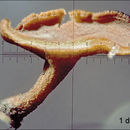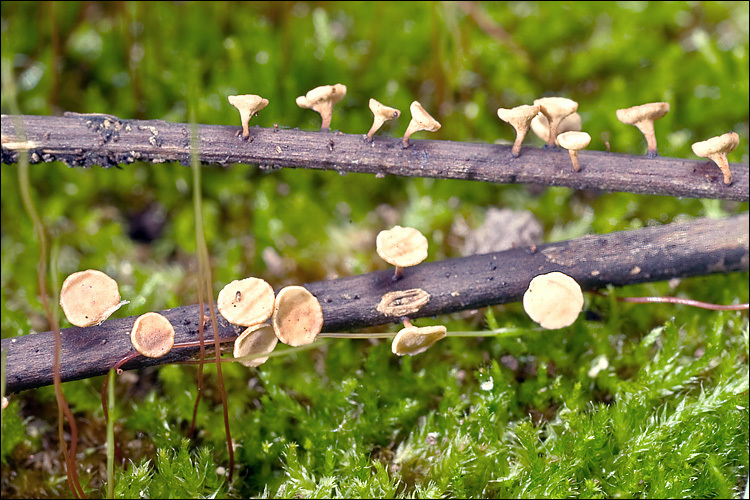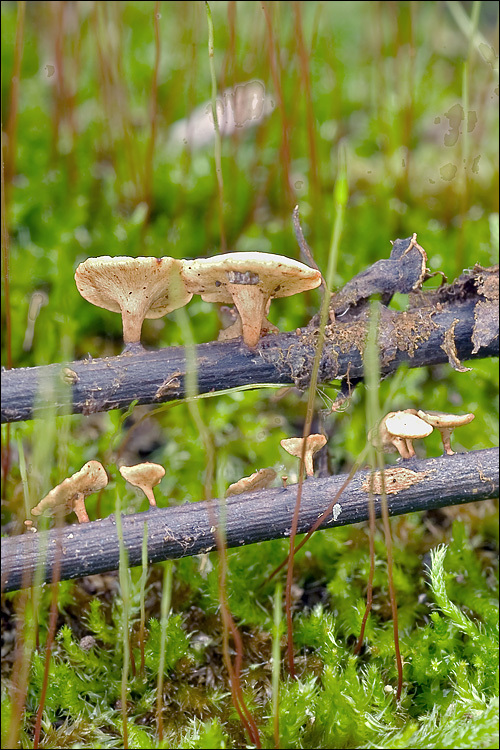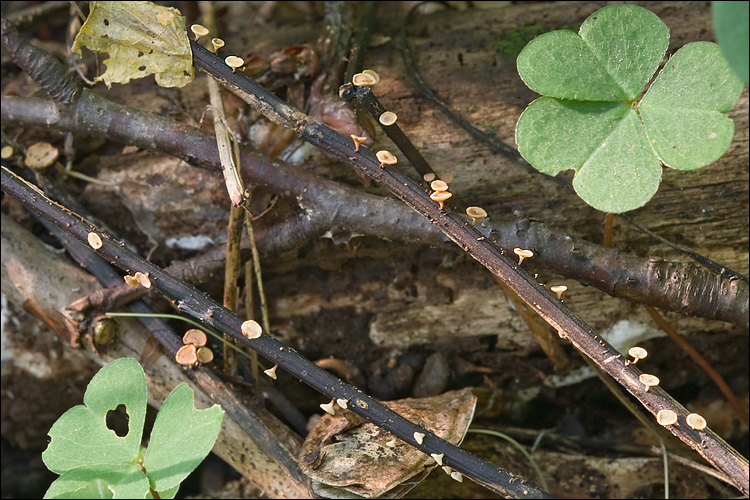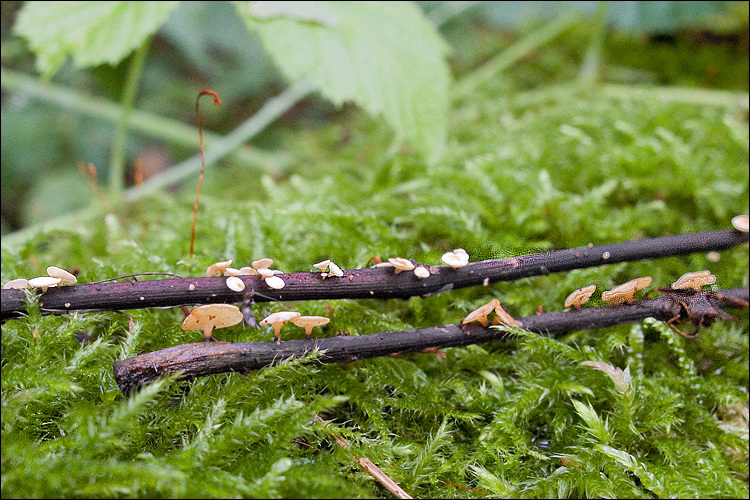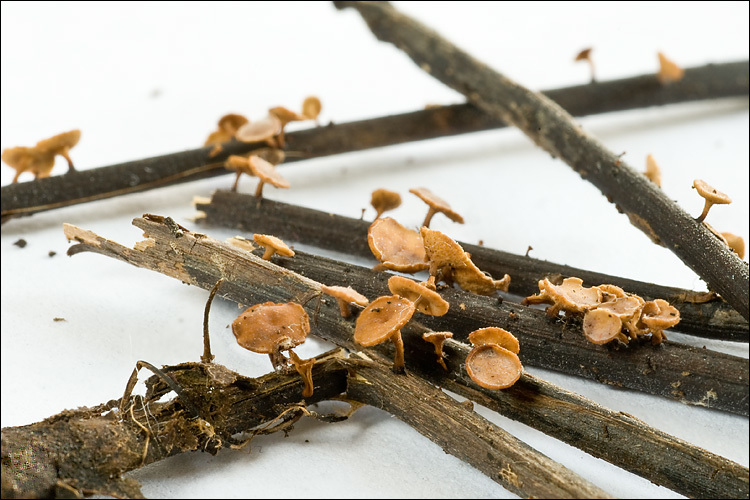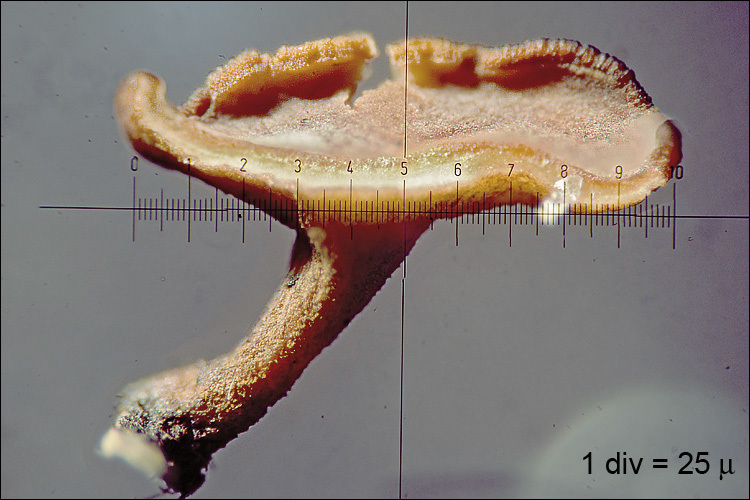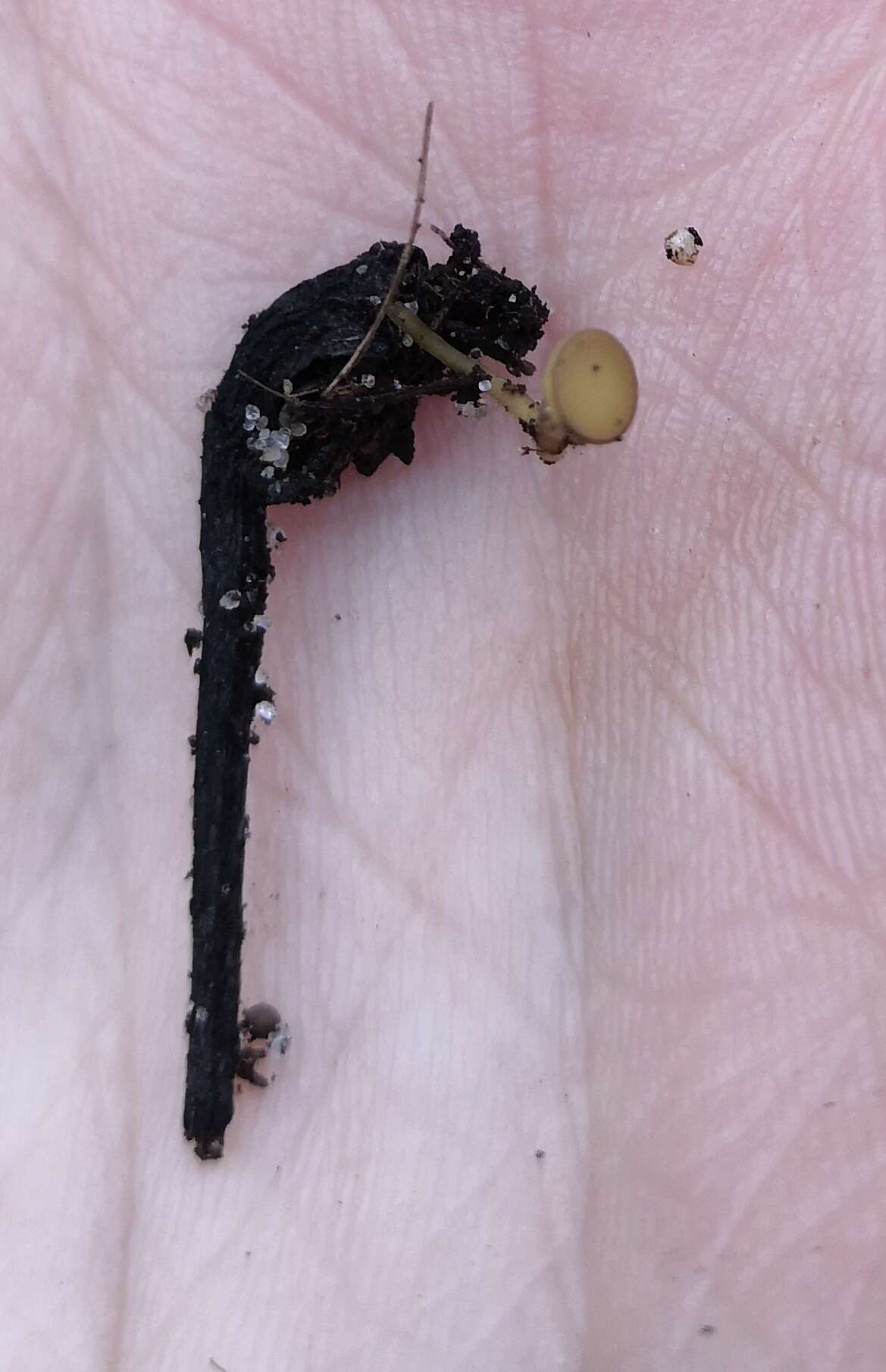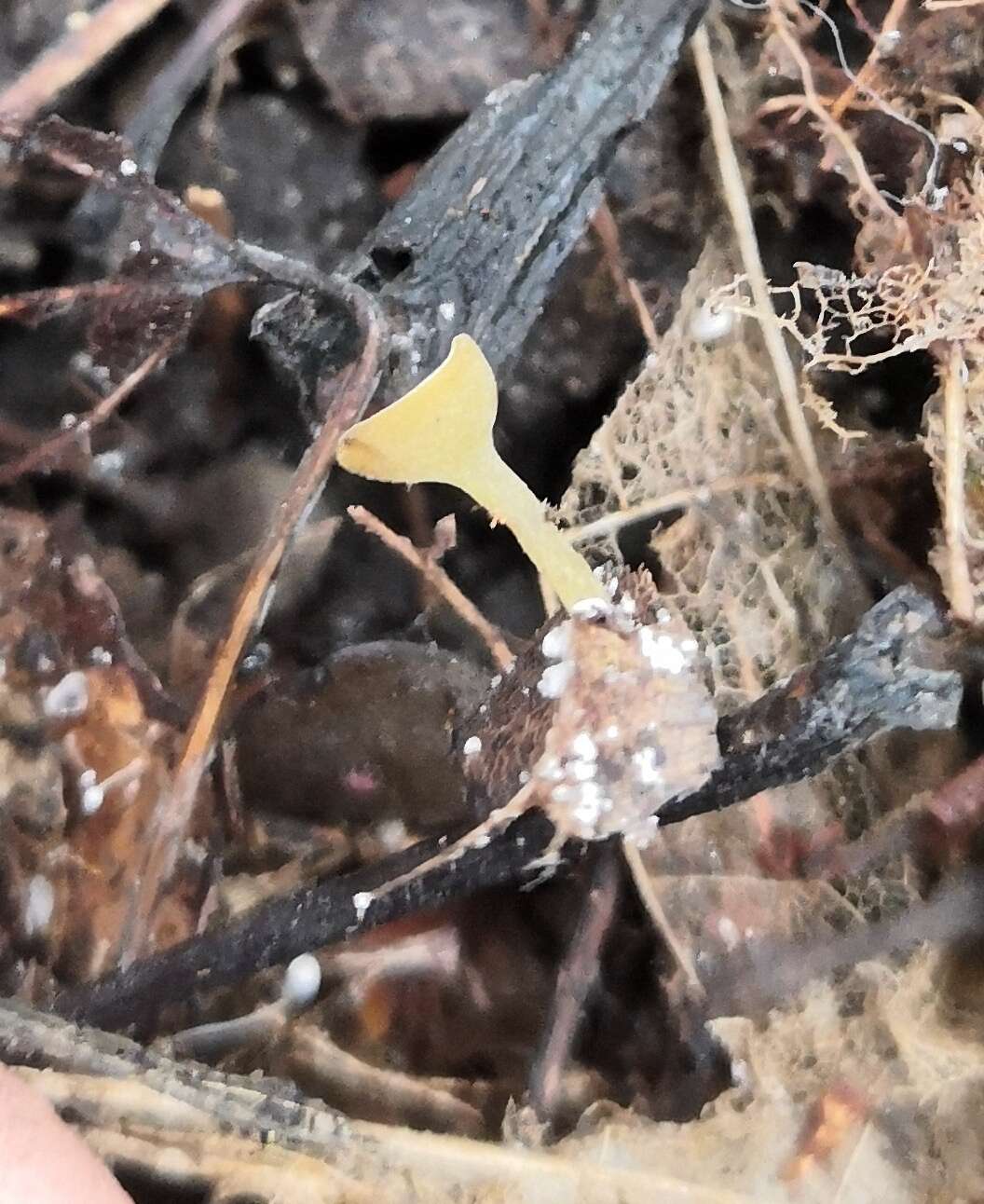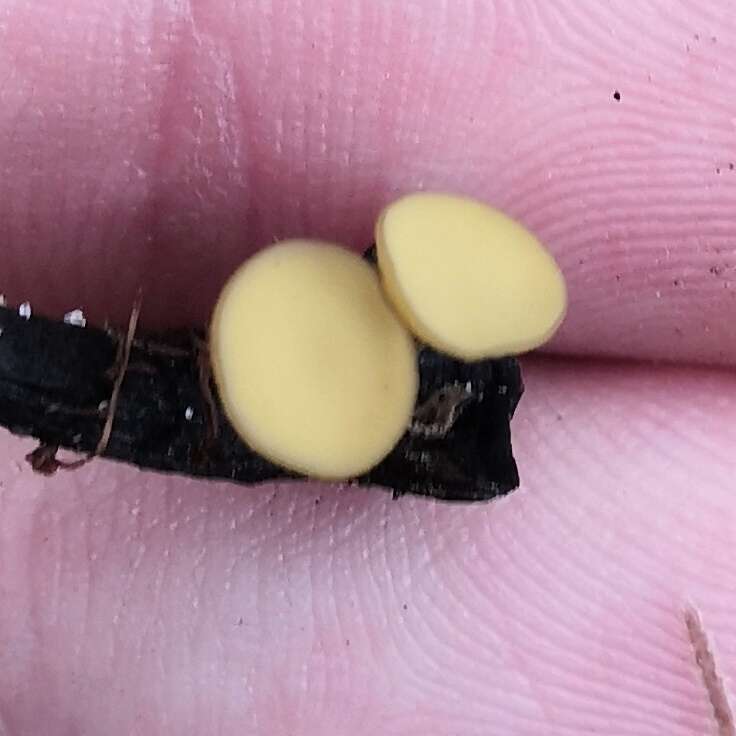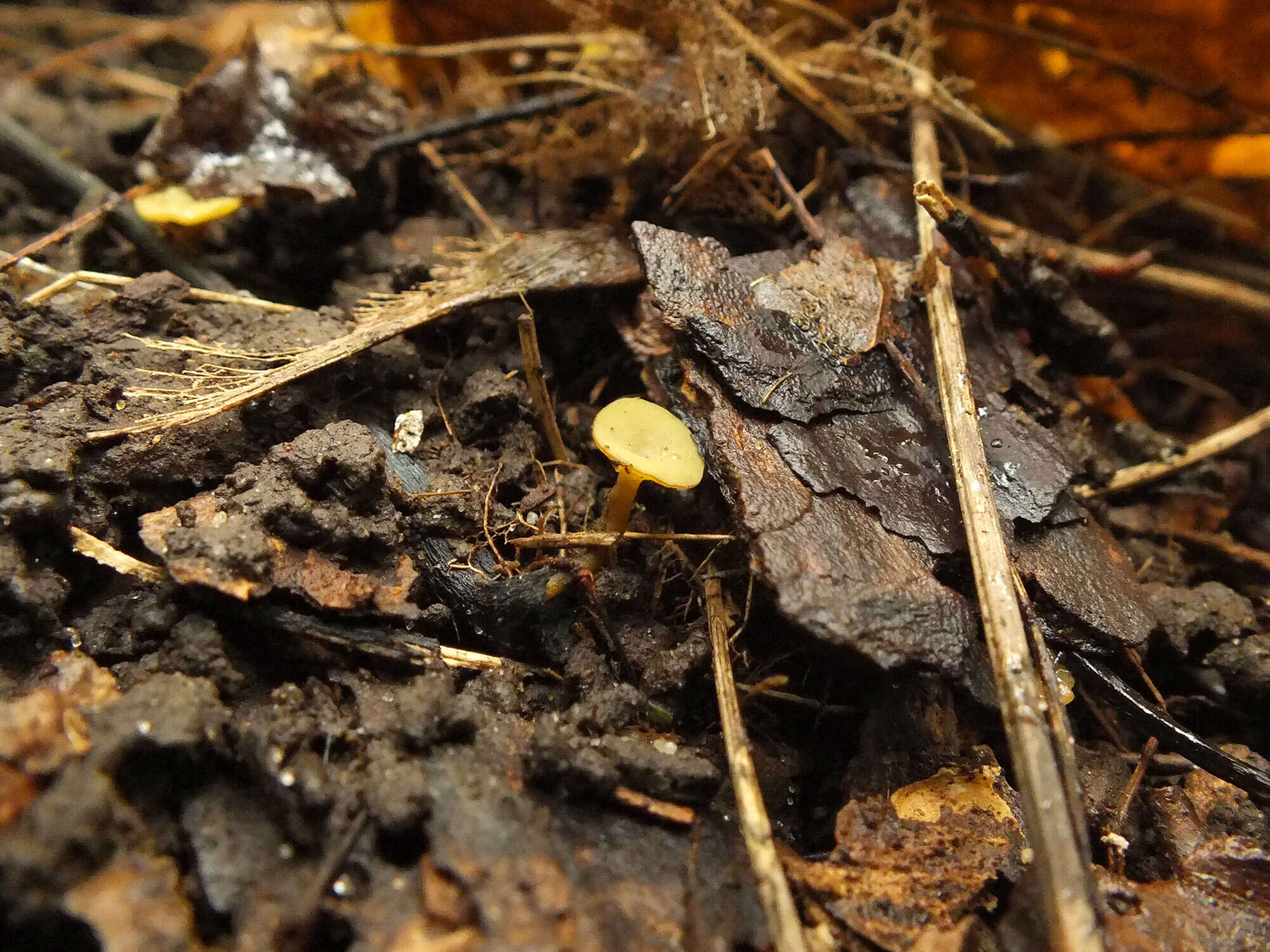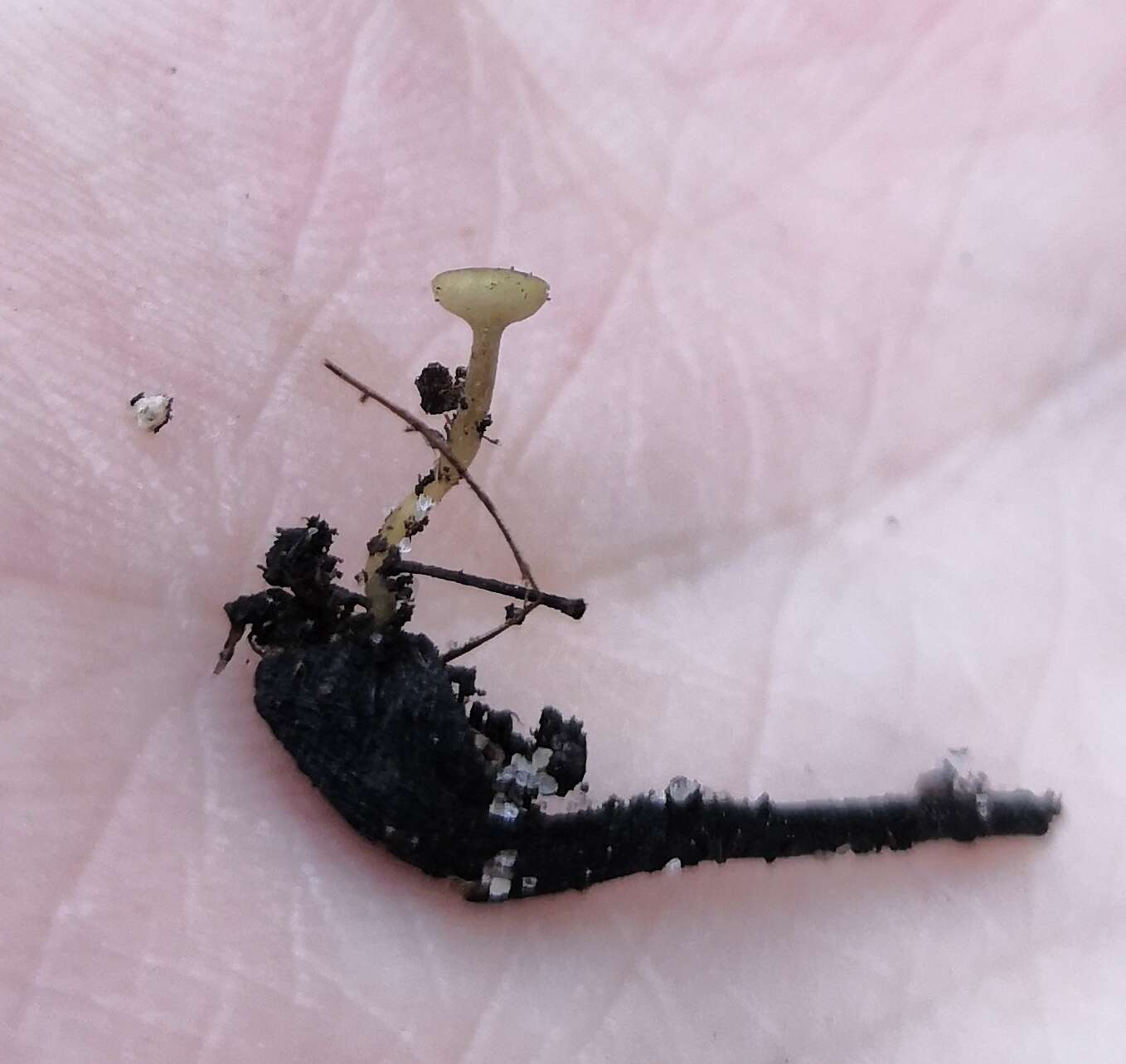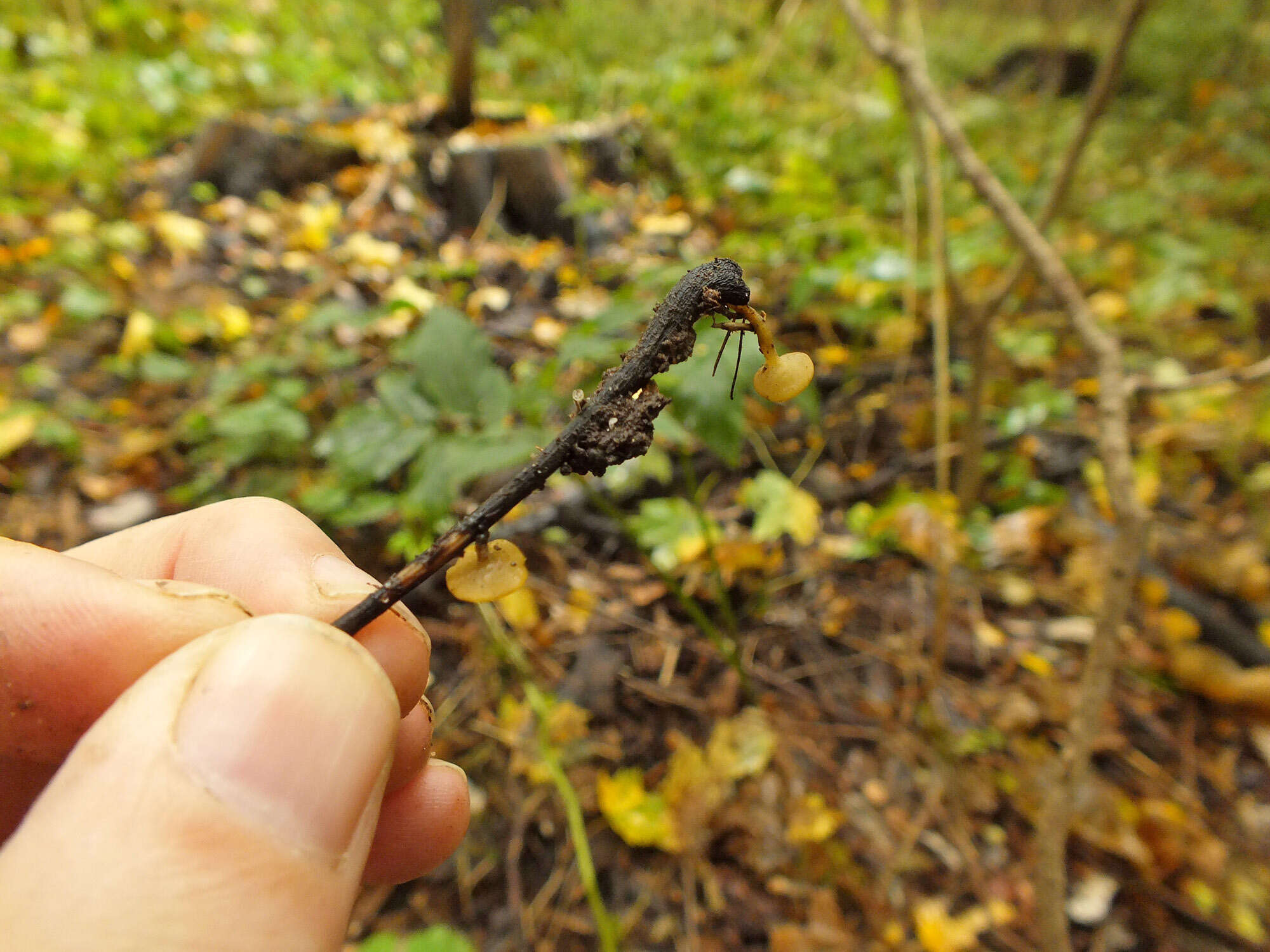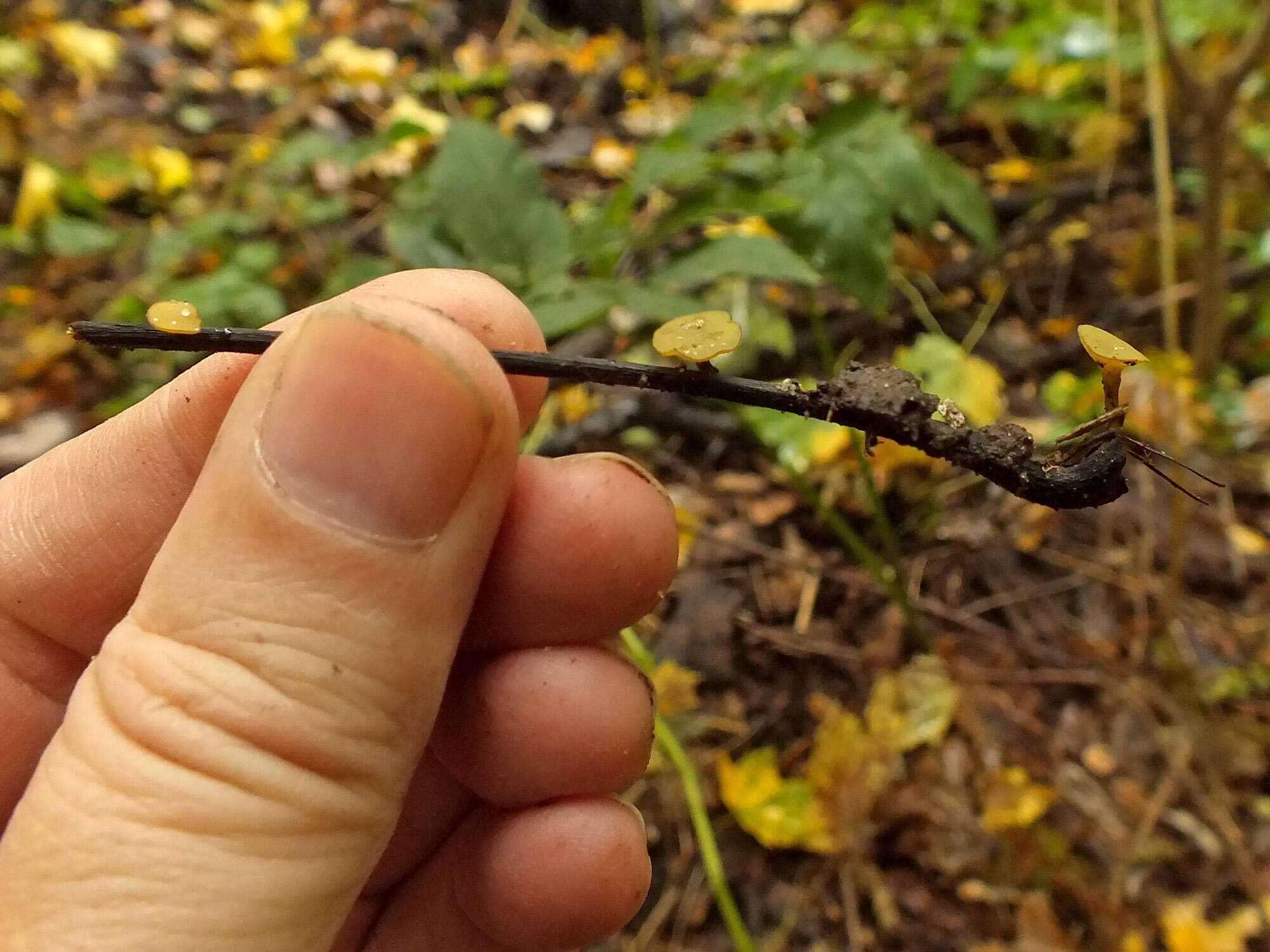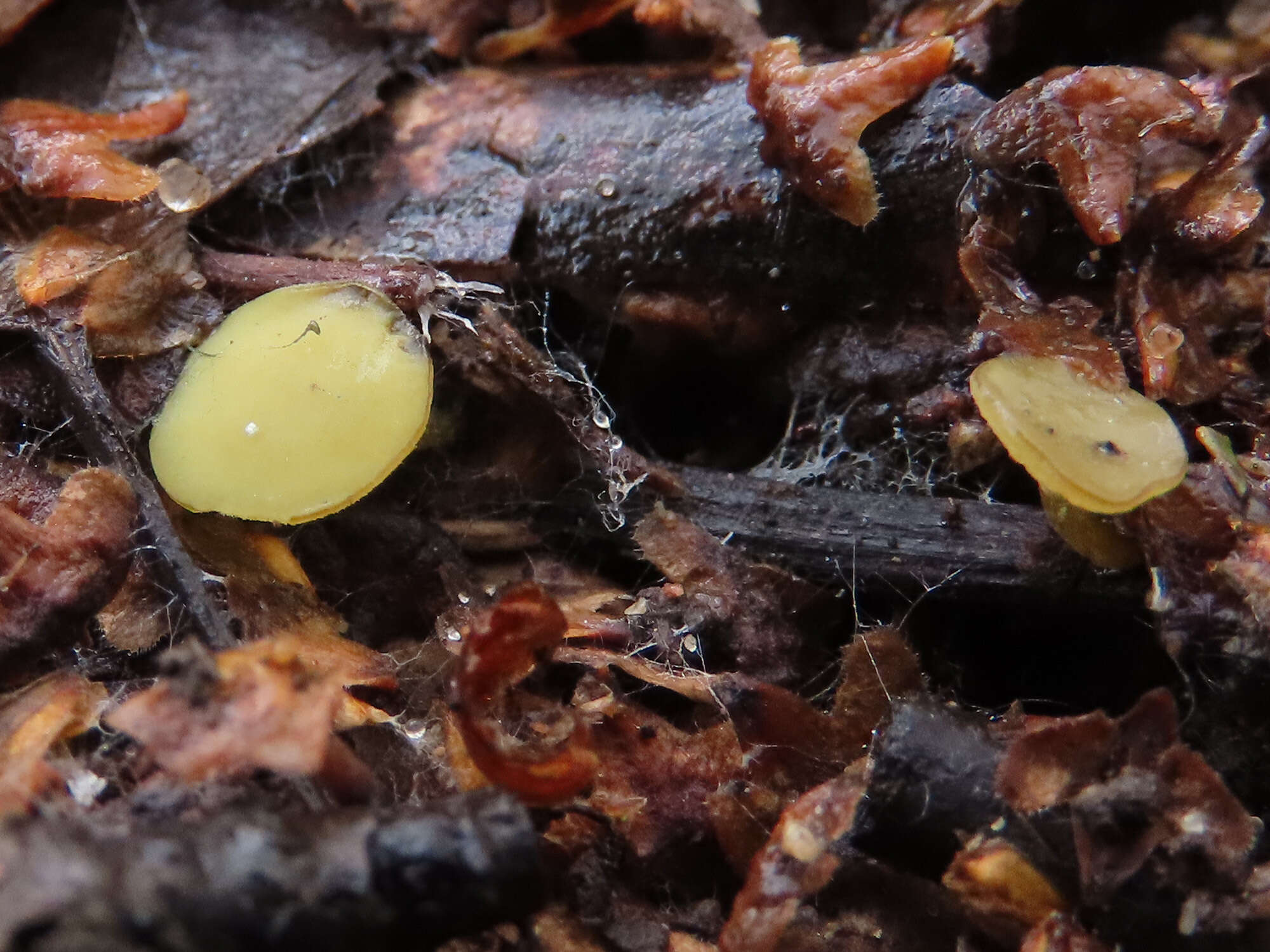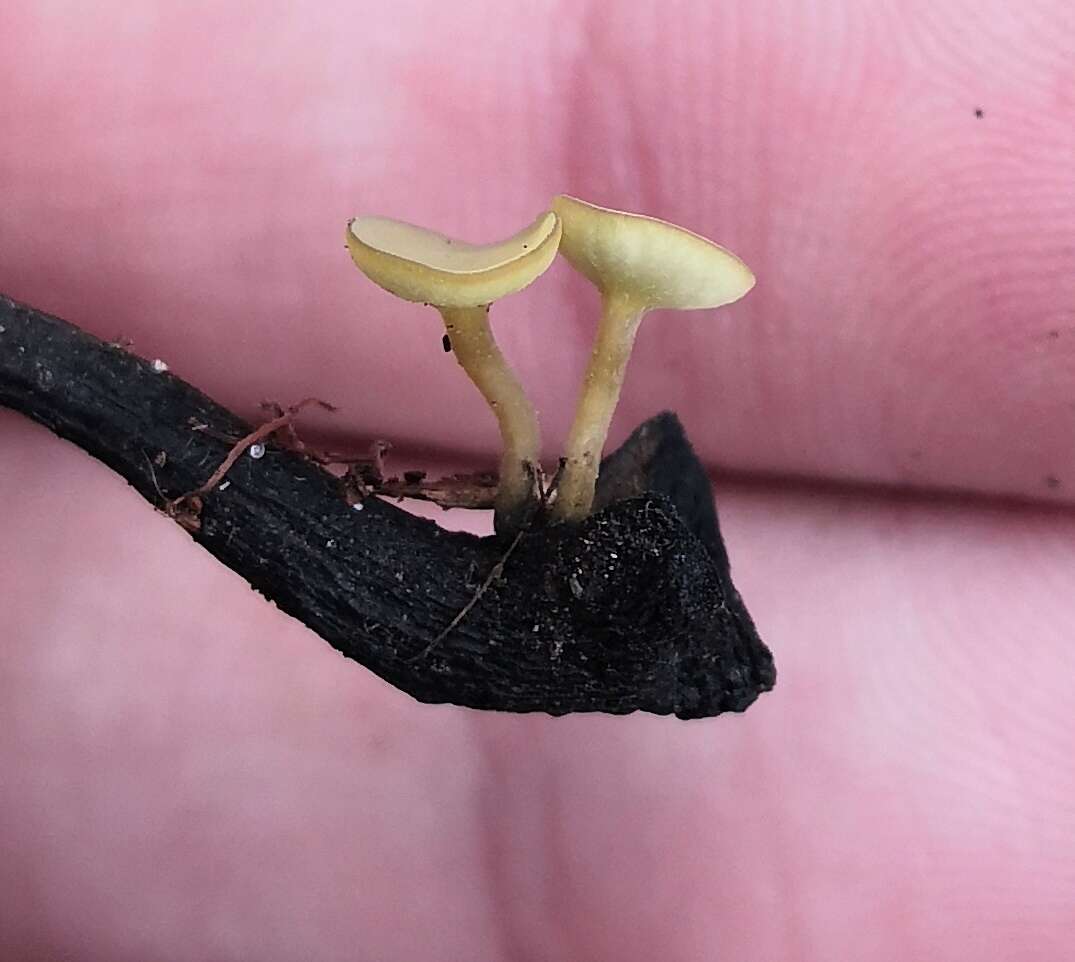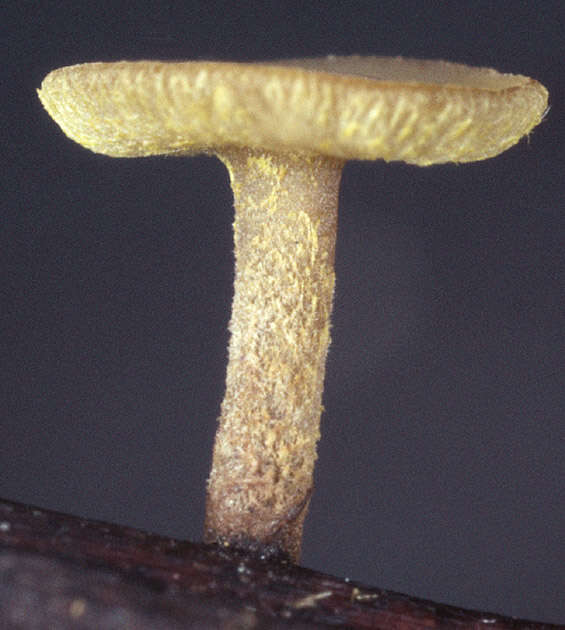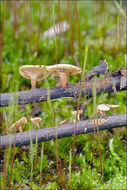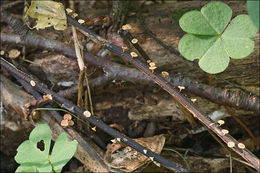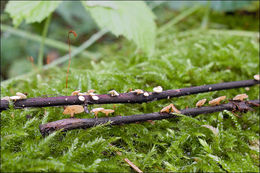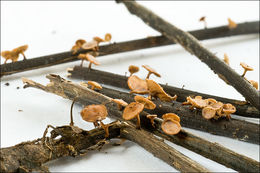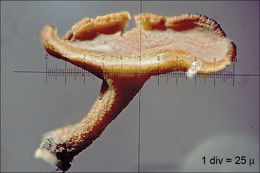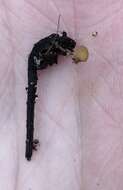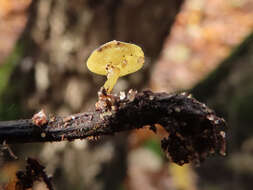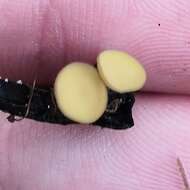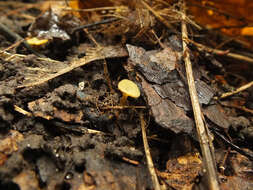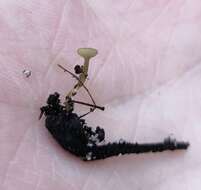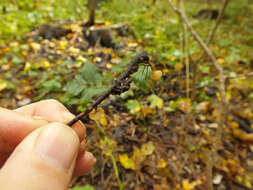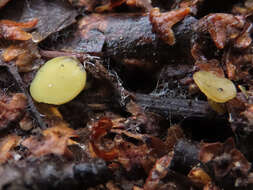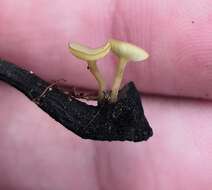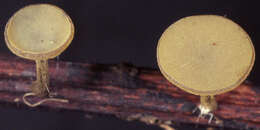-
Slo.: pecljata plitvica - Habitat: Mixed woodland, nearly flat ground, cretaceous clastic rock (flysh), partly protected from direct rain by trees canopies, mostly in shade, humid place, average precipitations ~3.000 mm/year, average temperature 8-10 deg C, altitude 435 m (1.450 feet), alpine phytogeographical region. - Substratum: rotten petioles of Acer sp. leaves from last year. - Comments: Substrate specific species, yet not completely certain determination. Stalks seem a bit short. Growing in groups of many species, several hundred around. Pileus diameter about 1-3 mm. - Ref.: (1) http://www.bio.uio.no/bot/ascomycetes/Taxa/Rutstroemia.html . (2) M.Bon, Parey's Buch der Pilze, Kosmos (2005), p 332. (3) J.Breitenbach, F.Kraenzlin, Eds., Fungi of Switzerland, Vol.1. Ascomycetes, Verlag Mykologia (1984), p 144.
-
Slo.: pecljata plitvica - Habitat: Mixed woodland, nearly flat ground, cretaceous clastic rock (flysh), partly protected from direct rain by trees canopies, mostly in shade, humid place, average precipitations ~3.000 mm/year, average temperature 8-10 deg C, altitude 435 m (1.450 feet), alpine phytogeographical region. - Substratum: rotten petioles of Acer sp. leaves from last year. - Comments: Substrate specific species, yet not completely certain determination. Stalks seem a bit short. Growing in groups of many species, several hundred around. Pileus diameter about 1-3 mm. - Ref.: (1) http://www.bio.uio.no/bot/ascomycetes/Taxa/Rutstroemia.html . (2) M.Bon, Parey's Buch der Pilze, Kosmos (2005), p 332. (3) J.Breitenbach, F.Kraenzlin, Eds., Fungi of Switzerland, Vol.1. Ascomycetes, Verlag Mykologia (1984), p 144.
-
Slo.: pecljata plitvica - Habitat: Mixed woodland, nearly flat ground, cretaceous clastic rock (flysh), partly protected from direct rain by trees canopies, mostly in shade, humid place, average precipitations ~3.000 mm/year, average temperature 8-10 deg C, altitude 435 m (1.450 feet), alpine phytogeographical region. - Substratum: rotten petioles of Acer sp. leaves from last year. - Comments: Substrate specific species, yet not completely certain determination. Stalks seem a bit short. Growing in groups of many species, several hundred around. Pileus diameter about 1-3 mm. - Ref.: (1) http://www.bio.uio.no/bot/ascomycetes/Taxa/Rutstroemia.html . (2) M.Bon, Parey's Buch der Pilze, Kosmos (2005), p 332. (3) J.Breitenbach, F.Kraenzlin, Eds., Fungi of Switzerland, Vol.1. Ascomycetes, Verlag Mykologia (1984), p 144.
-
Slo.: pecljata plitvica - Habitat: Mixed woodland, nearly flat ground, cretaceous clastic rock (flysh), partly protected from direct rain by trees canopies, mostly in shade, humid place, average precipitations ~3.000 mm/year, average temperature 8-10 deg C, altitude 435 m (1.450 feet), alpine phytogeographical region. - Substratum: rotten petioles of Acer sp. leaves from last year. - Comments: Substrate specific species, yet not completely certain determination. Stalks seem a bit short. Growing in groups of many species, several hundred around. Pileus diameter about 1-3 mm. - Ref.: (1) http://www.bio.uio.no/bot/ascomycetes/Taxa/Rutstroemia.html . (2) M.Bon, Parey's Buch der Pilze, Kosmos (2005), p 332. (3) J.Breitenbach, F.Kraenzlin, Eds., Fungi of Switzerland, Vol.1. Ascomycetes, Verlag Mykologia (1984), p 144.
-
Slo.: pecljata plitvica - Habitat: Mixed woodland, nearly flat ground, cretaceous clastic rock (flysh), partly protected from direct rain by trees canopies, mostly in shade, humid place, average precipitations ~3.000 mm/year, average temperature 8-10 deg C, altitude 435 m (1.450 feet), alpine phytogeographical region. - Substratum: rotten petioles of Acer sp. leaves from last year. - Comments: Substrate specific species, yet not completely certain determination. Stalks seem a bit short. Growing in groups of many species, several hundred around. Pileus diameter about 1-3 mm. - Ref.: (1) http://www.bio.uio.no/bot/ascomycetes/Taxa/Rutstroemia.html . (2) M.Bon, Parey's Buch der Pilze, Kosmos (2005), p 332. (3) J.Breitenbach, F.Kraenzlin, Eds., Fungi of Switzerland, Vol.1. Ascomycetes, Verlag Mykologia (1984), p 144.
-
Slo.: pecljata plitvica - Habitat: Mixed woodland, nearly flat ground, cretaceous clastic rock (flysh), partly protected from direct rain by trees canopies, mostly in shade, humid place, average precipitations ~3.000 mm/year, average temperature 8-10 deg C, altitude 435 m (1.450 feet), alpine phytogeographical region. - Substratum: rotten petioles of Acer sp. leaves from last year. - Comments: Substrate specific species, yet not completely certain determination. Stalks seem a bit short. Growing in groups of many species, several hundred around. Pileus diameter about 1-3 mm. - Ref.: (1) http://www.bio.uio.no/bot/ascomycetes/Taxa/Rutstroemia.html . (2) M.Bon, Parey's Buch der Pilze, Kosmos (2005), p 332. (3) J.Breitenbach, F.Kraenzlin, Eds., Fungi of Switzerland, Vol.1. Ascomycetes, Verlag Mykologia (1984), p 144. - Picture taken on March 3. 2011 shows herbarium dry specimens. Fruitbodies haven't turned dark brown-black as per J.Breitenbach (1984), which excludes similar R. firma.
-
Slo.: pecljata plitvica - Habitat: Mixed woodland, nearly flat ground, cretaceous clastic rock (flysh), partly protected from direct rain by trees canopies, mostly in shade, humid place, average precipitations ~3.000 mm/year, average temperature 8-10 deg C, altitude 435 m (1.450 feet), alpine phytogeographical region. - Substratum: rotten petioles of Acer sp. leaves from last year. - Comments: Substrate specific species, yet not completely certain determination. Stalks seem a bit short. Growing in groups of many species, several hundred around. Pileus diameter about 1-3 mm. - Ref.: (1) http://www.bio.uio.no/bot/ascomycetes/Taxa/Rutstroemia.html . (2) M.Bon, Parey's Buch der Pilze, Kosmos (2005), p 332. (3) J.Breitenbach, F.Kraenzlin, Eds., Fungi of Switzerland, Vol.1. Ascomycetes, Verlag Mykologia (1984), p 144. - Motic 2B-211, magnification 40 x, incidence light.
-
-
-
-
-
-
-
-
-
-
-
-
Longitude (deg): -2.4. Latitude (deg): 54.1. Longitude (deg/min): 2° 30' W. Latitude (deg/min): 54° 10' N. Vice county name: Mid-west Yorks. Vice county no.: 64. Country: England. Stage: Fruitbody. Identified by: Malcolm Storey. Category: standard photograph or close-up. Photographic equipment used: "35mm transparencies (on a variety of films, but Agfa CT18 in the 1960's to early 1980's followed by Fujichrome in the late 1980's.) Transparencies scanned with Minolta Dimage Scan Dual II AF-2820U transparency scanner.".
-
Longitude (deg): -2.4. Latitude (deg): 54.1. Longitude (deg/min): 2° 30' W. Latitude (deg/min): 54° 10' N. Vice county name: Mid-west Yorks. Vice county no.: 64. Country: England. Stage: Fruitbody. Identified by: Malcolm Storey. Category: standard photograph or close-up. Photographic equipment used: "35mm transparencies (on a variety of films, but Agfa CT18 in the 1960's to early 1980's followed by Fujichrome in the late 1980's.) Transparencies scanned with Minolta Dimage Scan Dual II AF-2820U transparency scanner.".
-
Longitude (deg): -2.4. Latitude (deg): 54.1. Longitude (deg/min): 2° 30' W. Latitude (deg/min): 54° 10' N. Vice county name: Mid-west Yorks. Vice county no.: 64. Country: England. Stage: Fruitbody. Identified by: Malcolm Storey. Category: standard photograph or close-up. Photographic equipment used: "35mm transparencies (on a variety of films, but Agfa CT18 in the 1960's to early 1980's followed by Fujichrome in the late 1980's.) Transparencies scanned with Minolta Dimage Scan Dual II AF-2820U transparency scanner.".

